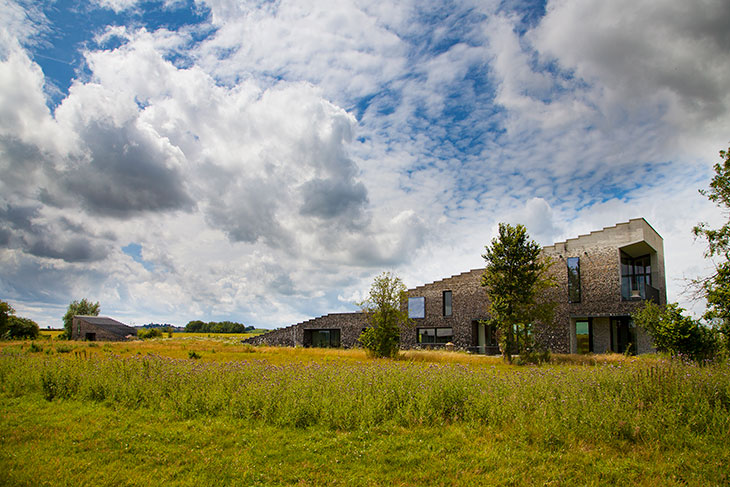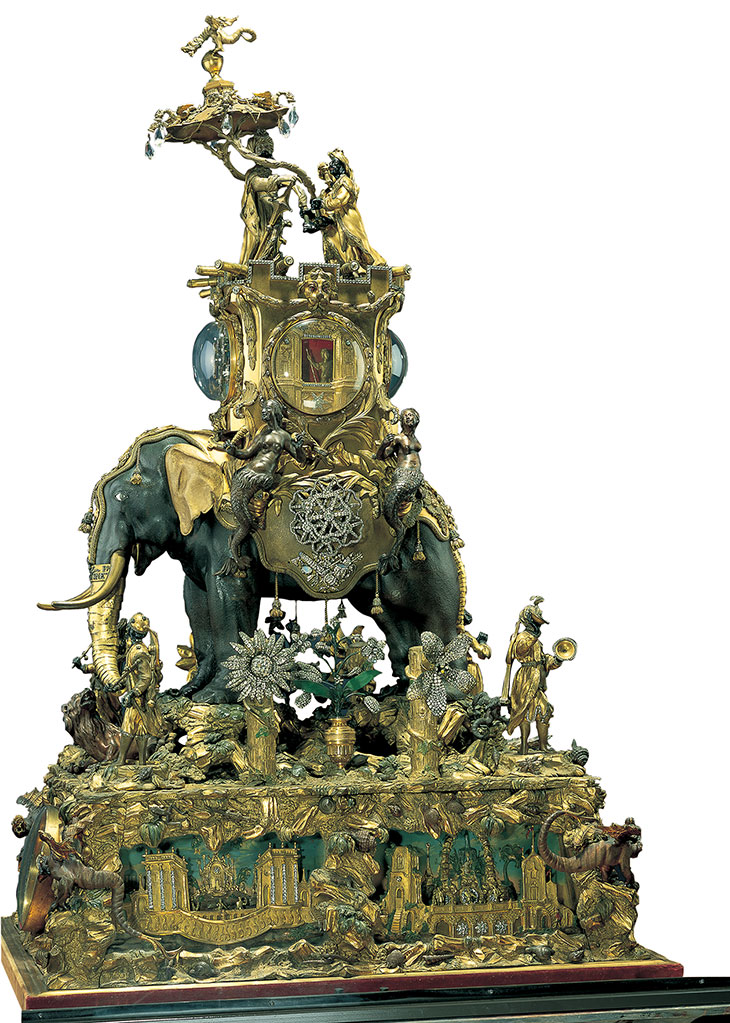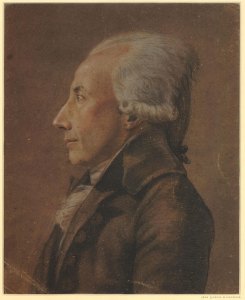It looks like historic houses in the UK are in for a busy summer. Although the settings may be familiar, there are still plenty of opportunities for discovery in these houses and their grounds – as I learned all too well during a residency at Waddesdon Manor two years ago.
I was a Getty Rothschild Fellow in residence at the Flint House, the RIBA-prize-winning folly commissioned by Lord Rothschild and completed in 2015 to the designs of Charlotte Skene Catling, which nestles in the valley at the foot of Windmill Hill, with its commanding views across the Aylesbury Vale. During the winter months the south-facing folly is easily visible from this vantage point, but by mid-May the striking, ziggurat-shaped building is concealed by a belt of willow and ash trees – so much so that friends who came to visit often had difficulties finding me. Throughout my residency I regularly walked up to the manor to study the paintings, furniture and porcelain displayed throughout the reception rooms – and here there were plenty of surprises, too. Not least among these, found lurking in the wood-panelled East Gallery, close to the main entrance and early in the visitor circuit, is a musical automaton in the shape of an elephant.
Flint House. Courtesy Waddesdon Manor

When in 1889 the Shah of Persia visited Baron Ferdinand de Rothschild at his recently completed French-style chateau in Buckinghamshire, he preferred this ‘magnificent toy […] to all the paintings, enamels, armour and Palissy ware’. The automaton was assembled by the Parisian clockmaker Hubert Martinet in the early 1770s while resident in London, where he took rented lodgings in Clerkenwell. It was then transported to fashionable Coventry Street and displayed at the Ring & Pearl, a jewellers’ shop belonging to Lewis Masquerier and his partner the watchmaker John Perigal, both third-generation Huguenots. For 2s 6d (12.5 pence) you could view the automaton in action – a bargain admission compared to the 10s 6d entry to Cox’s Museum in nearby Spring Gardens, Charing Cross. James Cox’s elaborate objets de virtu, including the ‘performing’ Silver Swan at the Bowes Museum in Barnard Castle and the peacock clock at the State Hermitage in St Petersburg, are world famous, but the Waddesdon elephant and its maker, Martinet, deserve to be better known.
Hubert Martinet’s elephant automaton. Photo: © National Trust/Waddesdon Manor

On 13 February 1772, an advertisement in The Gazetteer and New Daily Advertiser invited the ‘curious Spectator’ to admire this masterpiece at the Ring and Pearl between ‘ten o’clock in the morning till nine at night, every day’, except Sundays. The four-foot-tall elephant, the howdah (canopy seat on its back) and the rectangular platform on which it stands were described as ‘richly ornamented with gold and jewels, […] human figures, and [….] a vast variety of beasts, insects, serpents, dragons, shells, flowers, and fossils, curiously modelled, cast in brass, chased, and worked up to the very form of nature’. The figures move, the flowers open and shut and the elephant raises and lowers its trunk, swivels its eyes, flaps its ears and swishes its tail, all ‘motions performed by clock-work’. Glass roundels on the base, which contains the musical movement, are decorated with revolving stars, set with stones, and serpents that move ‘as if alive’. The display was designed to hold its audience captive, while gentlemen were tempted to purchase a new timepiece by the best contemporary watchmaker for themselves or pearls for their wives and daughters.
The automaton was intended for export to the East Indies, ‘To be seen till sold’. From 1766 Cox had supplied ‘Sing Song’ clocks worth a total of £550,000 for the Indian and Chinese markets (there are still some 18 clocks signed by Cox in the Beijing Palace Museum). But the Chinese market for such sophisticated machines had by now stalled; from 1770, the British East India Company banned export to China of all ‘clocks, toys or other articles ornamented with jewels’, due to oversaturation. It appears from recent research that the intended recipient of Martinet’s elephant was in fact an Indian potentate, but for some reason the sale fell through. Still, European interest was ripe; Cox’s goldsmith’s trade card at the Golden Urn in Racquet Court, Fleet Street advertised his stock of ‘Curious Work’ in French and German. The retail jeweller Masquerier’s regular visits to Paris demonstrate his own links with the French market, despite his Protestant faith.
Portrait of Lewis Masquerier (1792), John James Masquerier. © The Trustees of the British Museum

Such speculative enterprises came with a high cost: during his most productive years, for example, James Cox employed between 800 and 1,000 specialist workmen. These skilled specialists came from Belgium, Prussia and Riga and from the established London community of Huguenot craftsmen that included Charles Magniac, Cox’s chief designer and chaser. They would come and go in response to demand for their work. Many of the suppliers who worked with Cox probably contributed to Martinet’s elephant, which bears its maker’s signature lettered in paste, imitating diamonds, on the elephant’s trunk between the tusks.
Masquerier and Perigal apparently failed to sell the elephant. Perhaps it was transported to Paris for display at the Hôtel de Châtillon on Rue de Tournon, where a similar automaton could be viewed in May 1774 – elephants were a popular feature on automata and clocks. In 1777 the inventory of Martinet’s stock in Paris, drawn up after he declared bankruptcy, lists three elephant clocks. The elephant’s journey in the century that followed can be tentatively traced across Europe – including to the Netherlands, where in the 1870s it was probably displayed in a travelling museum in Arnhem, Harleem and Amsterdam – until at some point before 1889 it was acquired by the Baron de Rothschild and brought back to England.
Today the elephant, which was recently restored by Jonathan Betts, an expert on historical automata, remains a highlight of Waddesdon’s collection. It was selected by the National Trust for the first episode of the new podcast series 125 Treasures, hosted by Alison Steadman and launched this month. An in-depth study of the automaton, written by Jonathan Betts and Roger Smith, is also forthcoming. In the meantime, when the manor opens next week, monthly performances will recommence – and will be sure to captivate a whole new generation of viewers.
The house at Waddesdon reopens to visitors on 19 May. More information is available on the Waddesdon website.


